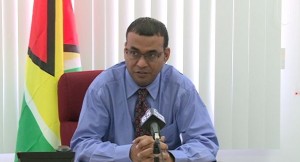Guyanese Minister Reacts to COHA Article

The following article appeared in the Guyana Times and refers to a COHA article on corruption in the mining sector in Guyana.
In wake of a damning report on corruption within the local mining sector, Natural Resources Minister Robert Persaud said government was committed to working closely with the Extractive Industries Transparency Initiative (EITI) to ensure that the industry is free from corruption.
Persaud’s remarks were made at the Guyana Day Forum at the Prospectors and Developers Association Conference 2013 held in Toronto, Canada. During his address, the minister made reference to the recently published Council on Hemispheric Affairs (COHA) report which stated that Canadian companies are exploiting the mineral wealth of Guyana because of the political instability in the county, which he said is neither true nor fair to the people, government, nor investors operating in the extractive industries of Guyana. The minister pointed out that Guyana is a mining-friendly country and through effective governance by agencies such as the Guyana Geology and Mines Commission and the Environmental Protection Agency, the minerals sub-sectors can boast of consistent growth and development, which is done in a very transparent manner. However, the minister’s remarks prompted a question from the audience concerning the report and the level of political stability in Guyana. The response came from private companies with business interests in Guyana who all supported the view that doing business in Guyana is not difficult. The current government of Guyana has ensured that the minerals industries consistently expanded over the years, the minister added.
Investment-friendly
Additionally, the investors also highlighted that the mining industry in Guyana is investment-friendly and the government and respective ministries and agencies work diligently at both policy and technical levels. As such, companies operate in a sustainable manner to ensure that the environment is protected and the corporate social responsibilities for their geographic locations are delivered efficiently. COHA has claimed in a recent publication that Canadian mining companies not only exploit “large stock of natural resources” in Guyana, but they also bring “waves of unwelcomed corruption”.
“The heavy interest of foreign multinationals in Guyana’s natural resources is not surprising, as the unstable and corrupt political environment presents an attractive opportunity for foreign firms looking to take advantage of the country’s rotting political and economic institutions,” said the council in a statement. “The majority of this corruption is the product of decades-long dependence on foreign capital and restrictive macroeconomic policies, as well as governmental inefficiencies and an ethnically-divided society,” it added. COHA claimed that alleged corruption in the mining industry is not simply restricted to Guyana’s borders but is also present on Canadian soil. It pointed to “multiple obstacles foreigners face” in the Canadian legal system, “where it is nearly impossible for foreign citizens to bring lawsuits involving egregious environmental and human rights violations in Canadian courts”. COHA said the majority of foreign allegations brought against Canadian companies have been assigned to the host country’s criminal justice system, “where they are often prosecuted under much more lenient regulatory standards”.
It pointed to a 1997 lawsuit filed by Guyanese villagers against Cambior Corporation regarding the Canadian corporation’s alleged negligence surrounding a dam break disaster along the Omai River. The think tanks said “this catastrophe resulted in mass contamination and fatalities”.
It said the Quebec court refused to hear the case, claiming it did not have jurisdiction, subsequently passing the lawsuit on to the Guyanese judiciary. COHA said child labour is also a “widespread problem” within the Guyanese mining industry. Most recently, it said an eight-year-old child was found labouring in a gold mine in the Puruni region, near the Venezuelan border.
“Unfortunately, this shocking case is not unique, as a 2011 report issued by the U.S. Department of Labour indicated that more than 44,000 children under the age of 14 are currently working in Guyana, where the legal working age is 15, and many of those under-aged workers can be found in the mines,” COHA said. The council pointed out that the report claimed that “commercial exploitation is a problem in Guyana, including instances of forced prostitution”. It said during the last week of January, indigenous groups lost a “crucial court case” filed against mining companies, when the Guyanese High Court decided that it does not have the right to expel miners from their lands.
The council pointed out that in July 2012, Guyana’s Natural Resources and Environment Ministry announced the suspension of all new mining permits, but did not revoke the old permits. “This is a clear violation of the 1978 Amerindian Act, which was supposed to return land titles to indigenous groups,” it said. COHA has called on the Guyanese government to “seriously increase the management oversight of its mining and public sectors.
For additional news or analysis on Latin America, please go to: LatinNews.com

